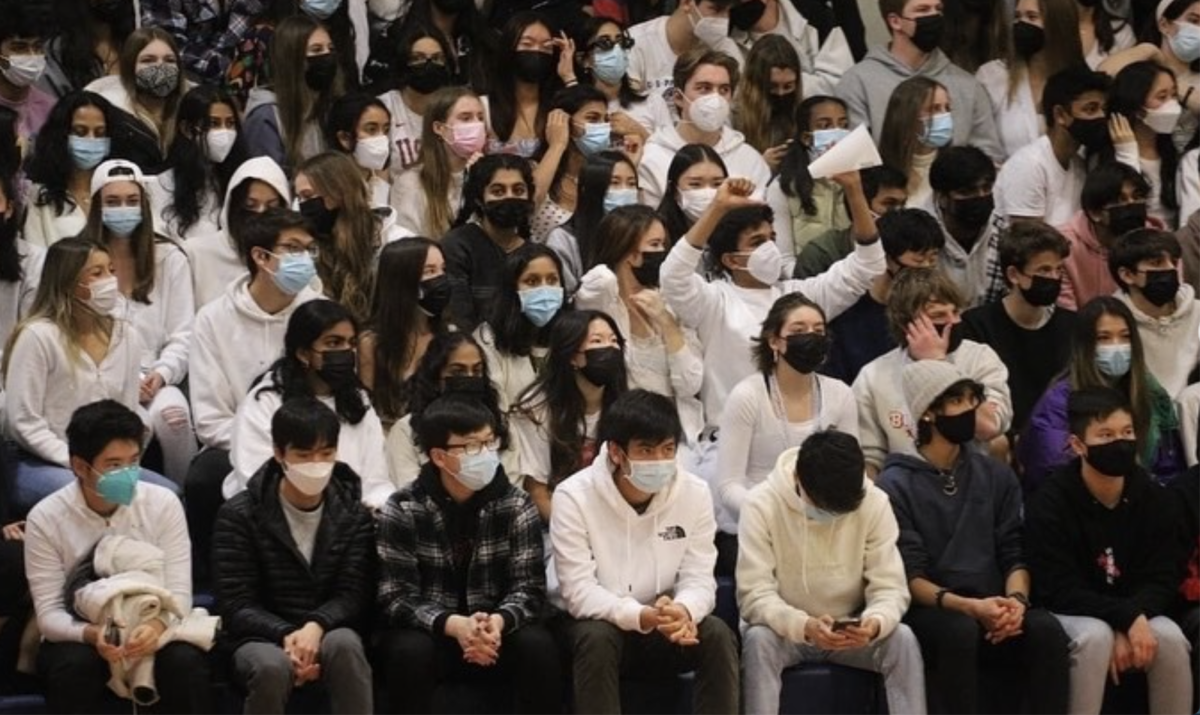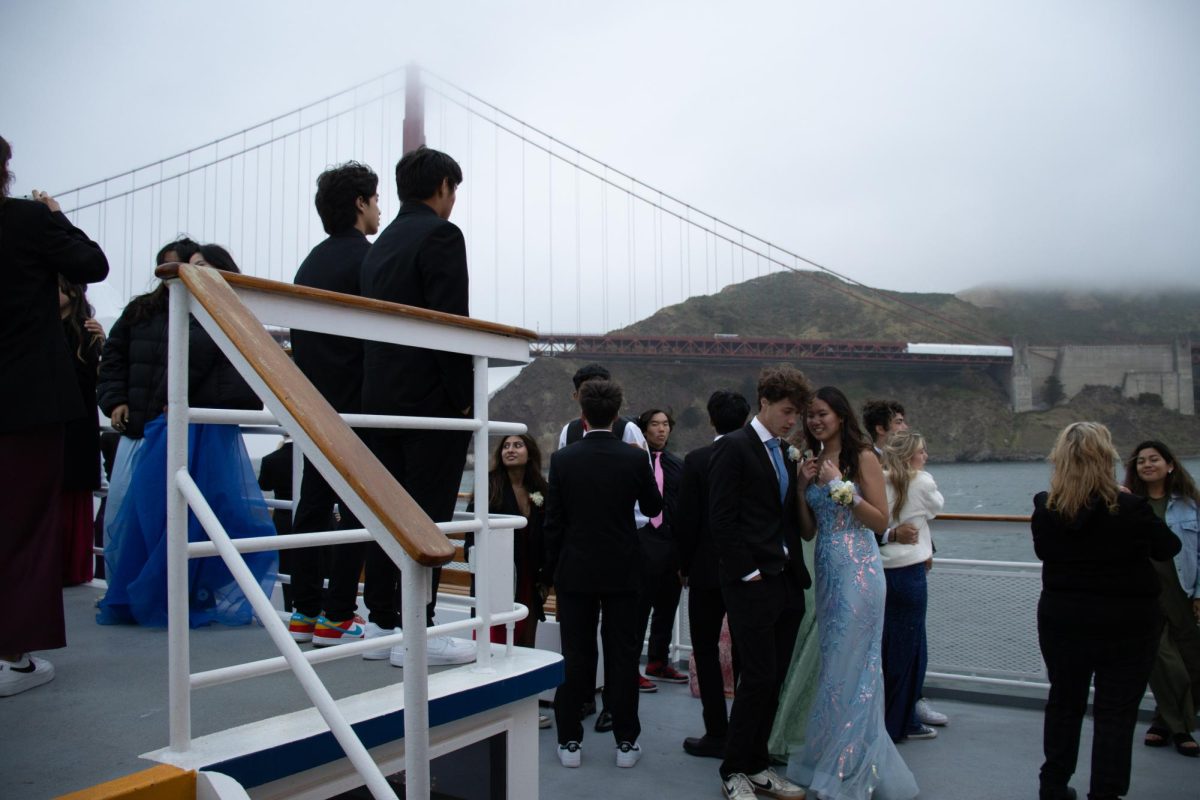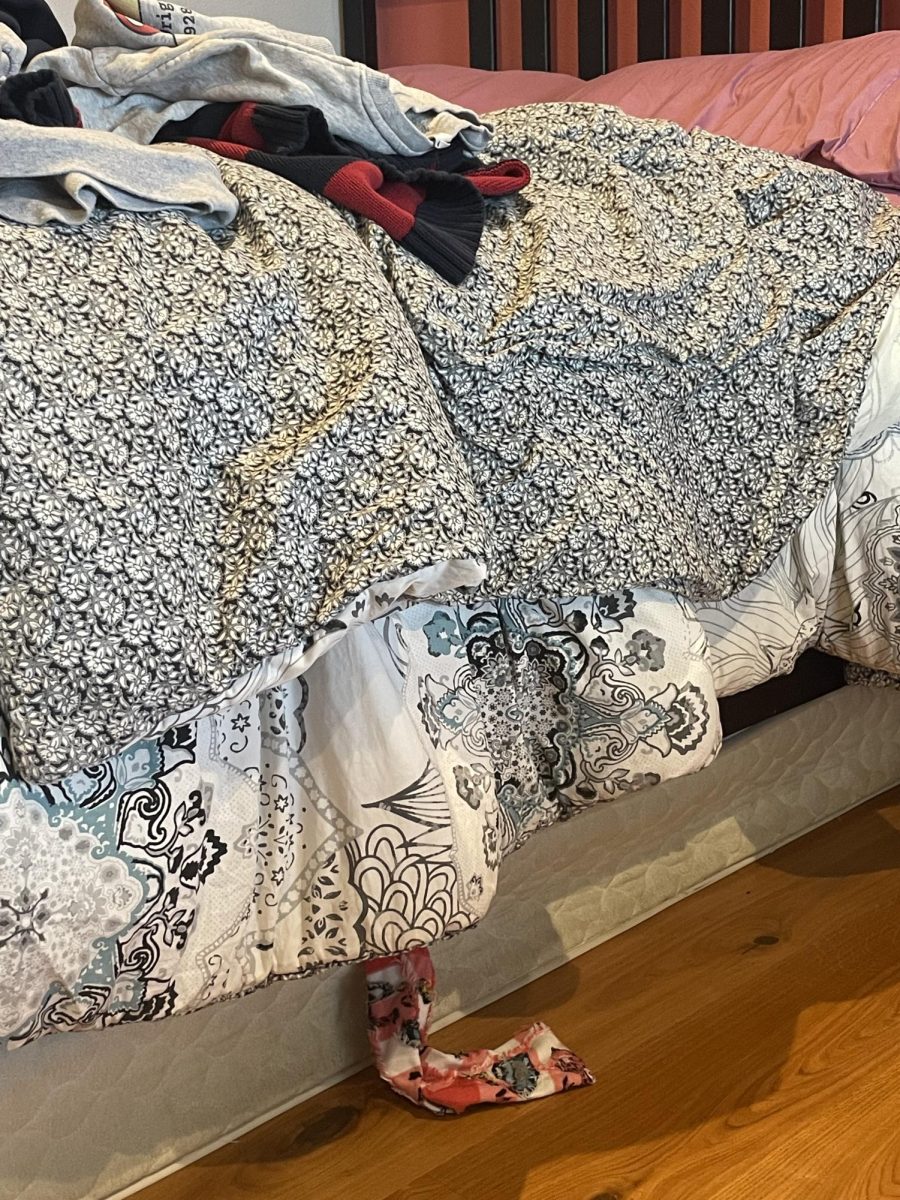There are two things I love talking about most in this world. The hollow vortex of entropy and eventual heat death of the universe that will swallow us all into an abyss of freezing nothingness, and the ways authors and artists utilize visual storytelling to add depth to their narratives.
Well, today I’m going to talk about the latter of those two. And personally, as a nerd who loves visual storytelling, I was more than pleased with the incredible work that the costume, hair and makeup designers managed to do with this fall’s “Radium Girls” theater production, which ran from Nov. 8 to Nov. 16.
I really enjoyed the visual transformations that took place throughout the story, for one. Heroine Grace Fryer’s transformation was especially a standout. Played by senior Kat Aldrete, Grace was introduced to us dressed in a lacy short-sleeved white button-up, pleated skirt, rolled-down knee socks and simple loafers — the skirt, to me, evoked the image of a schoolgirl uniform, signifying Grace’s innocence at the time, with the socks also feeling distinctly childish. I was reminded of the fashion trends of young Japanese girls of the ‘90s to roll down their school uniform socks, helping to cement that youthful association.
The white button-up, however, I interpreted as a visual representation of how close Grace is to death while working in the dial-painting factory — the play often has characters close to death of radiation poisoning wear white (such as Marie Curie, Irene and Katheryn) to signify bloodlessness. While Grace, at this point in the story, is interacting with radioactive paint every day and, therefore, is at constant risk of death even if she doesn’t know it, we, as the audience, can see her deteriorating health through the clothes she wears to work — a brilliant theatrical choice.
The lace on her top also paralleled the top her mother wears, although her mother’s button-up is much more conservative, signifying how, as a child, Grace is still very influenced by her mother, a role played by sophomore Misha Khairom.

Aldrete’s acting was also incredible in selling this youthful stage of her life.
In her second costume change, Grace sported a dropped-waistline red flowy dress with a black rose embellishment on the hip, black heels, white lacy socks and a black cloche hat, occasionally also wearing a pearl necklace.
The look felt distinctly more mature and vibrant: the dress specifically reminded me of the styles of flappers of the time, and the lace, embellishment and pearls evoked the feeling of carefree opulence, of the economic boom of the time (even if Grace’s family itself ends up having financial problems quickly during this part of the play due to Grace’s medical bills).
The cloche hat was a fashion staple more commonly worn among young women rather than girls of the time, and the heels felt more mature compared to her previous loafers, helping to reinforce the idea that Grace is aging from a teenager into a young adult.
The color of the dress, too, conveyed significant ideas — bright, vibrant red, associated with passion, love and vitality. This part of the play is one where Grace is the closest to her fiance, making the association with love obvious, and it is worn before she discovers that she is slowly dying of radiation poisoning, when her vitality is at some of its highest points before she starts slowly succumbing to the illness. The rose and hat she wore were black, too, further symbolizing how even in this more joyful time in her life, the darkness is slowly creeping up on her, even if it is less prominent in her design now that she has quit working at the dial-painting factory.

The red color was a really good call.
Grace’s third look of the play maintained the cloche hat but changed her dress to a midi-length long-sleeve cream dress with a covered neck, as well as a cane to help her move around as her illness progresses. The style is significantly more conservative — signifying Grace’s attempts in the story toward maintaining the image of a pure, innocent victim for the public during this time of the story when her experiences are being publicized, but also making her look more stifled, less comfortable.
The covered neck part both demonstrated how she is being insincere in her emotions and stifling her anger (the neck is, of course, one of the more vulnerable parts of the body and therefore covering it signifies a lack of vulnerability) and almost looks like the fabric is being stretched back, like it’s choking her.
The color was more washed-out as well, furthering the theme of paler colors being associated with death. Contrasted to her previous bright red dress, it almost felt like a metaphor for the warmth in her — the blood, the vitality — being sucked out by the radiation sickness.

I believe she also wears nightgowns a lot during this stage which are similarly white.
The less prominent characters also got their standout moments with costuming, however — Mrs. MacNiel (played by sophomore Aradhita Singh), the overseer of the floor that Grace works at, has a wonderfully rigid costume to signify her rigid character. She sports a set of a structured pleated skirt and jacket as well as a black shirt and elegant hat — she looked put-together. Maybe even a little wealthier (the matching skirt and jacket almost reminds me of vintage Chanel looks), as an overseer should. She dressed entirely in shades of black and grey to signify the harm she causes in the factory by not following safety regulations when dealing with the radioactive paint.

It was one of my favorite costumes in the show, really.
I also really enjoyed the costuming of Katherine Wiley (played by senior Katie Berger), Grace’s main advocate throughout the story. The finger waves the hair and makeup designers did for her are delightfully 1920s and look quite beautiful — as well as her outfit, a slightly oversized brown suit jacket and skirt of the same color, helps reinforce just how important she is in Grace’s life as her first real advocate in the fight against the U.S Radium Corporation; therefore, she literally takes up more space on the stage.
The brown color also reminds me of Grace’s own previous red dress, albeit a darker version of it — further showing just how interconnected the two characters are. (I could not find a clear picture of her costume on the official Saratoga Theater Arts website, unfortunately.)
The subtle costuming decision of making Arthur Roeder (the main antagonist and head of the dial painting factory, played by senior Ryan Backhus) and his close business partner, Edward Markley, dressed in solid-colored suits while their opposition dresses in mostly pinstripe suits was also a clever touch (especially when it foreshadows Arthur’s other business partner’s, Charlie Lee’s, eventual betrayal of him).
Beyond the aesthetic features, costume designer Jenny Garcia, a retired longtime science teacher at the school, took care to ensure the costumes weren’t impractical enough to cause trouble when the actors quickly changed between scenes, wouldn’t overheat the actors, wouldn’t hinder the actors’ movements and could be made out of cheap material or pulled from stock. Garcia emphasizes that practicality was her main concern when costuming and the symbolic interpretation presented in this article is strictly my conjecture.
As I left the McAfee Center following a performance, it was clear to me that all the care and attention the Saratoga Theater Arts staff contributed into making this play as visually intriguing as it showed their dedication to the craft and ended up elevating the play immeasurably.


























